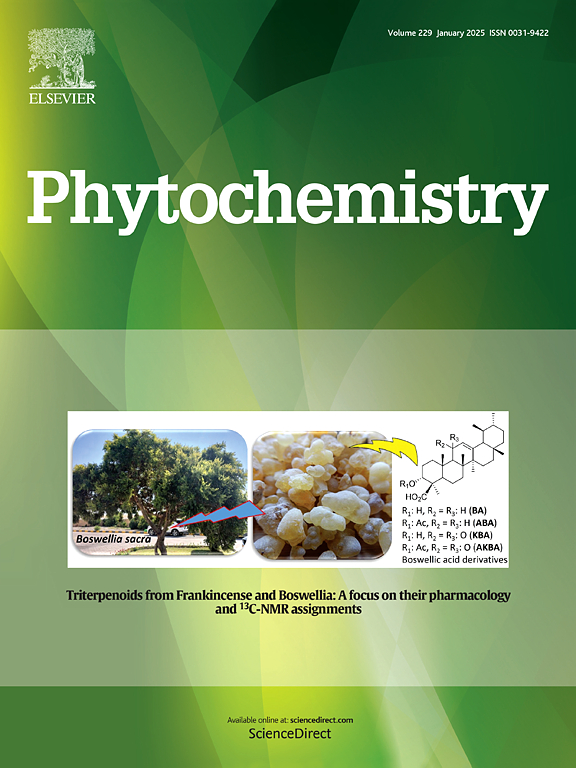水仙的倍半萜类化合物。和装备。通过抑制糖酵解途径具有抗炎活性
IF 3.4
2区 生物学
Q2 BIOCHEMISTRY & MOLECULAR BIOLOGY
引用次数: 0
摘要
6个先前未被描述的倍半萜类化合物,命名为achisetaces a - f(1 - 6),包括一种罕见的C6-O-C10桥接的瓜木酚内酯型倍半萜类化合物(1),以及9个已知的类似物(7-15)。,装备。通过光谱技术(IR, UV, hresms, 1D和2D NMR),结合DP4+ NMR分析和量子电子圆二色性(ECD)计算,确定了1-6的描述结构及其绝对构型。在lps诱导的RAW 264.7细胞中,观察化合物1-15对一氧化氮(NO)生成的抑制作用。化合物6和10具有显著的抗炎活性,IC50值分别为1.56±0.32 μM和6.89±0.47 μM。此外,一项机制研究表明,化合物6通过抑制PFKFB3的激活来调节糖酵解途径,发挥抗炎作用。本文章由计算机程序翻译,如有差异,请以英文原文为准。

Sesquiterpenoids from Achillea setacea Waldst. & Kit. with anti-inflammatory activity by inhibiting the glycolytic pathway
Six previously undescribed sesquiterpenoids, named achisetaces A–F (1–6), involving a rare C6–O–C10 bridged guaianolide-type sesquiterpenoid (1), along with nine known analogues (7–15), were obtained from the aerial parts of Achillea setacea Waldst. & Kit. The undescribed structures of 1–6 including their absolute configurations were determined through spectroscopic techniques (IR, UV, HRESIMS, 1D and 2D NMR), combined with DP4+ NMR analysis and quantum electronic circular dichroism (ECD) calculations. The inhibitory effects of compounds 1–15 on nitric oxide (NO) production were evaluated in LPS-induced RAW 264.7 cells. Compounds 6 and 10 exhibited significant anti-inflammatory activities with IC50 values of 1.56 ± 0.32 and 6.89 ± 0.47 μM, respectively. Moreover, a mechanistic study revealed that compound 6 exerted the anti-inflammatory activity by regulating the glycolytic pathway via suppression of PFKFB3 activation.
求助全文
通过发布文献求助,成功后即可免费获取论文全文。
去求助
来源期刊

Phytochemistry
生物-植物科学
CiteScore
6.40
自引率
7.90%
发文量
443
审稿时长
39 days
期刊介绍:
Phytochemistry is a leading international journal publishing studies of plant chemistry, biochemistry, molecular biology and genetics, structure and bioactivities of phytochemicals, including ''-omics'' and bioinformatics/computational biology approaches. Phytochemistry is a primary source for papers dealing with phytochemicals, especially reports concerning their biosynthesis, regulation, and biological properties both in planta and as bioactive principles. Articles are published online as soon as possible as Articles-in-Press and in 12 volumes per year. Occasional topic-focussed special issues are published composed of papers from invited authors.
 求助内容:
求助内容: 应助结果提醒方式:
应助结果提醒方式:


